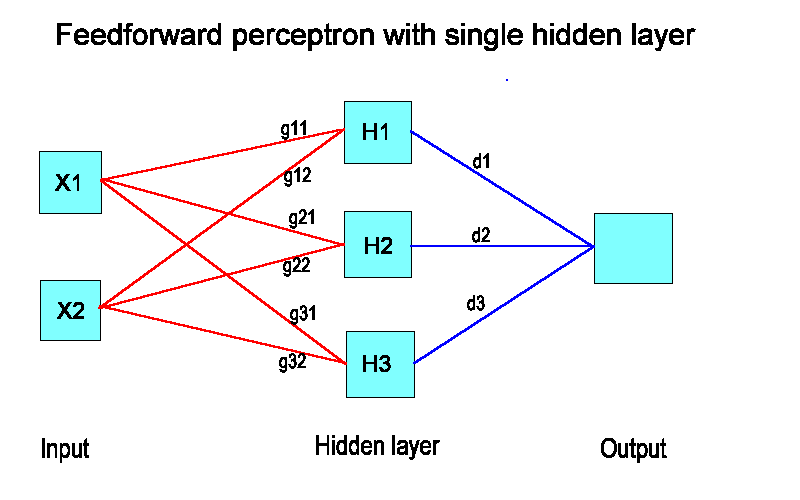Todays class.
Classification in the internet demographics dataset.
Building classification models.
Judging models on out of sample prediction.
We will consider the Feedforward Perceptron with a Single Hidden Layer.
It's objective is to output probabilities of group membership based on a set of inputs.
Figure 1 is a diagram of a single hidden layer network. Essentially it links inputs to outputs through a set of weights and activation functions. In class we will only use the ``logistic'' activation function though others are available. In the displayed network there are two inputs and three units in the hidden layer.
Therefore between the input layer and the hidden layer we are looking for the following weights
Link X1 and X2 to H1. Weights g11 and g12. Link X1 and X2 to H2. Weights g21 and g22. Link X1 and X2 to H3. Weights g31 and g32.Now apply the activation function T (logistic) to each hidden unit to get
T(g11 X1 + g12 X2) T(g21 X1 + g22 X2) T(g31 X1 + g32 X2)The procedure also looks for weights d1, d2 and d3 to form
d1 T(g11 X1 + g12 X2) + d2 T(g21 X1 + g22 X2) + T(g31 X1 + g32 X2),and finally the output is given by
T(d1 T(g11 X1 + g12 X2) + d2 T(g21 X1 + g22 X2) + T(g31 X1 + g32 X2))
Figure 1.

Fitting a given net involves finding the set of weights that best matches observed and predicted outputs.
It is the inclusion of the hidden layer that makes the network a very flexible fitting tool.
Compare the neural network diagram to the previous logistic regression diagram.